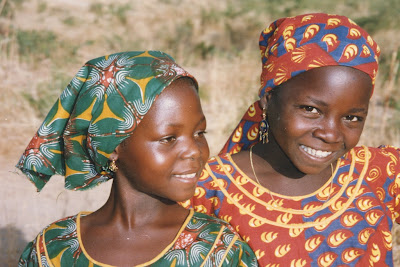
Fact 1
Worldwide, a woman dies every minute due to complications during pregnancy and childbirth - more than 500 000 women per year. In developing countries, pregnancy and childbirth are the second leading causes (after HIV/AIDS) of death among women of reproductive age.
Fact 2
Five main killers cause more than 70% of maternal deaths worldwide: severe bleeding, infections, unsafe abortion, hypertensive disorders (pre-eclampsia and eclampsia) and obstructed labour. Postpartum bleeding can kill even a healthy woman, if unattended, within two hours. Most of these deaths are preventable.
Fact 3
More than 136 million women give birth a year. About 20 million of them experience pregnancy-related illness after childbirth. The list of morbidities is long and diverse, and includes fever, anaemia, fistula, incontinence, infertility and depression. Very often, ill women are stigmatized and ostracized by their husbands, families and communities.
Fact 4
About 14 million girls aged between 15 and 19 give birth each year, accounting for more than 10% of all births. In the developing world, about 90% of the births to adolescents occur in marriage. In many countries, the risk of maternal death is twice as high for an adolescent mother as for other pregnant women. Fact 5
Fact 5
The state of maternal health mirrors the gap between the rich and the poor. Only 1% of maternal deaths occur in high-income countries. A woman's lifetime risk of dying from complications in childbirth or pregnancy is about one in seven in Niger and one in 48 000 in Ireland. Also, maternal mortality is higher in rural areas and among poorer and less educated communities.
Fact 6
Most maternal deaths can be prevented through skilled care at childbirth and access to emergency obstetric care. In sub-Saharan
Africa, where maternal mortality ratios are the highest, only 40% of women are attended by a trained midwife, nurse or doctor during childbirth.
Fact 7
In developing countries, the percentage of women who have at least four antenatal care visits during pregnancy ranges from less than 10% to more than 90%. Poor women in rural areas especially do not receive the necessary check-ups. They miss the opportunity to get immunization, and treatment for diseases or for prevention of mother-to-child transmission of HIV/AIDS.
Fact 8
About 18 million unsafe abortions are carried out in developing countries every year, resulting in 70 000 maternal deaths. Many of these deaths could be prevented if information on family planning and contraceptives were available and put into practice.
Fact 9
One target of the Millennium Development Goals (MDGs) is to reduce the ratio by three quarters between 1990 and 2015. So far, the progress has been slow. By 2005 the global maternal mortality ratio declined by only 5%, from 430 tmaternal mortalityo 400 maternal deaths per 100 000 live births. There was no progress in sub-Saharan Africa, where the risk of maternal death is the highest.
Fact 10



7 comments:
Your facts were way informative. I didn't realize how many teens were responsible for the worldwide birth rate.
I absolutely love how you did facts. It's a quick easy way to get information to your viewers. Nicely done!
This is really interesting. The fact that stood out to me was the amount of abortions that could be avoided just by using contraceptives. I don't condone abortions by any mean and think that if a couple is having sex they must be ready to deal with the consequences, but the use of contraceptives could avoid so many health problems for those who are not ready to become parents.
This is such an important topic. The overall health of a nation is measured through the health of mothers and children. Women have also proven to be key and powerful agents of change and health advocacy.
Wow - so interesting!
Wow - so interesting!
I'm glad it was helpful, Thanks girls! :)
Post a Comment